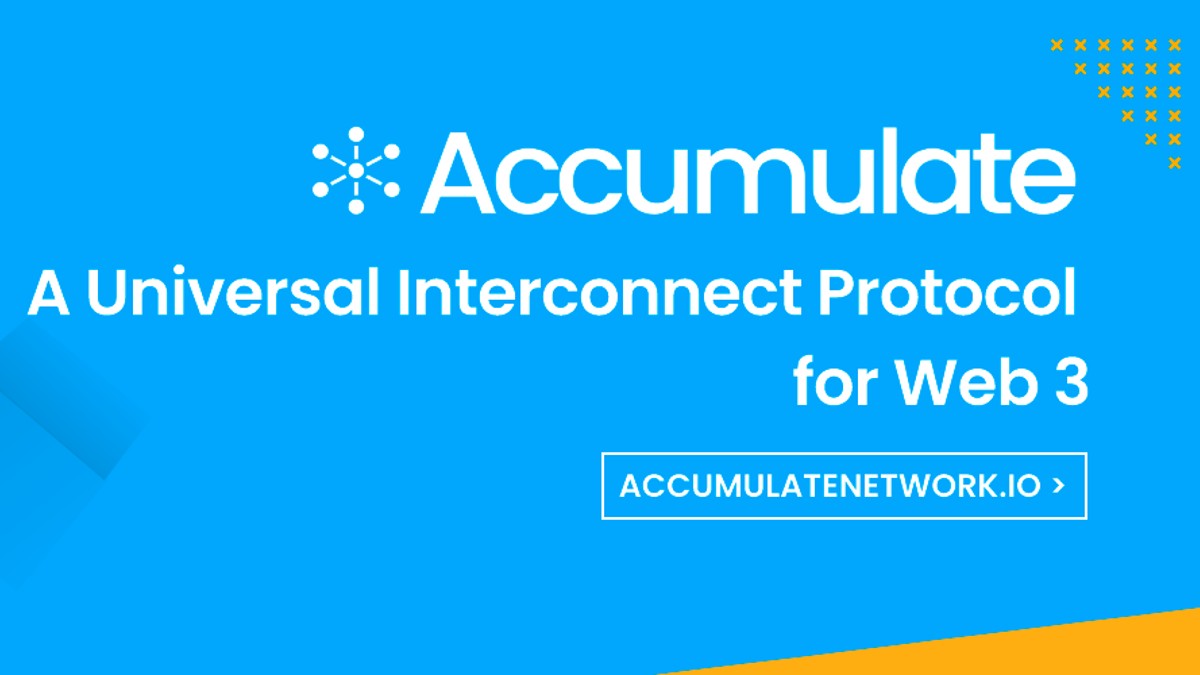Accumulate Protocol: Interoperability at the Forefront
Disclaimer: The text below is an advertorial article that was not written by Cryptonews.com journalists.

The blockchain industry is still largely self-contained and focused on approaching problem solving through novel ways that mainly revolve around decentralization and transparency. Although these issues are extremely important and decentralized finance (DeFi) proves that there are new ways of approaching them that do not have to rely on slow and obsolete practices, traditional finance is still undoubtedly the biggest approach to finance, and both TradFi and DeFi can only benefit from a mutual understanding.
However, this is in most cases much easier said than done. Thanks to its significant differences compared to traditional finance, decentralized finance is still largely struggling to establish a trustless, yet transparent and secure link to financial institutions and services of the traditional type. Solving this problem would help bridge the gap that currently separates these two approaches to finance and bring innovations to both of them. This is where Accumulate comes in.
What Does Accumulate Solve?
In its litepaper, Accumulate says it is aiming to become “the bridge to the digital economy.” Its purpose is to enable both individuals and financial institutions to do everything that DeFi already does without depending on external validators, by focusing on a framework centering around identity instead of addresses. As they point out, addresses are notorious for their complexity; very few users carefully check the string for inconsistencies before sending funds, relying on only verifying the first and last few characters, which leaves them open and vulnerable to man in the middle attacks.
Accumulate replaces them with so-called Accumulate Digital Identifiers (ADIs), which solve the problem of readability and are assigned by an individual or an organization, functioning similarly to URLs. ADI ownership gives a person full control of tokens, keys, data, identities, all without risking the inherent properties of decentralized technology like security and flexibility. Additionally, the project manages to solve the risk of a 51% attack by exponentially increasing the difficulty of such an attack simply by connecting, or “anchoring”, a transaction to any two Layer 1 blockchains. With a number of other features, the project solves many issues that plague both TradFi and DeFi in order to offer both the perks that the other one offers.
History and Notable Achievements
The Accumulate Testnet 3.0 Helix was released on February 1st 2022 and it was named after the landmark pedestrian Helix Bridge that connects Singapore’s Marina Centre and Marina South. The testnet introduced the aforementioned anchoring, as well as a fee schedule, token burning, multi-sig, a custom token issuer, a web app, and a myriad of other important features. Before the mainnet launches sometime in the second quarter of this year, there will be another testnet—check back to see if they’ve updated anything about it on their blog, which also has extensive articles and guides to what they do.
On top of that, the platform is also already finding its use cases and new applications: a recent hackathon called Assembly saw the development of a Python Wrapper Software Development Kit as its winning project with a number of other participants that designed fresh new upgrades to the existing platform.
To learn more about the project and what it does, visit their blog!







